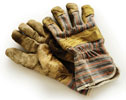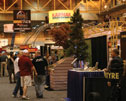Of the three primary fall-protection systems the Occupational Safety and Health Administration's (OSHA's) construction regulations specify for workers, personal fall-arrest (PFA) systems can be one of the more complex to use correctly.
A PFA system usually is composed of a body harness, rope-grab lanyard attached to the D-ring on the back of the harness, lifeline to which the rope-grab attaches and anchor to which the lifeline attaches with a snap hook.
Complying with OSHA
Arresting forces applied to the human body when stopping a fall can be substantial. According to OSHA rules, the arresting force must be limited to 900 pounds when a body belt is used and 1,800 pounds when a body harness is used.
Most body belts have two positioning rings on each side of the belt, and some have a D-ring on the back to serve as a lifeline's main attachment point. During NRCA safety classes, roofing workers often express a desire to use a body belt with the two side rings acting as attachment points for a connection to assist with positioning themselves on steep-slope roofs. However, OSHA rules require that only full-body harnesses be used as part of PFA systems. A question often asked is: "Why can't a body belt be used on a roof as a positioning device?"
OSHA defines "positioning device system" as the use of a body belt or body harness "to allow an employee to be supported on an elevated vertical surface, such as a wall, and work with both hands free while leaning." This definition is intended to apply to work such as vertical concrete formwork where workers might be on an elevated surface tying rebar and require both hands to perform work.
Such a system is not allowed in roofing applications because the positioning-type system suggested by some roofing workers could at some point be required to provide fall-arrest protection, demanding the use of a body harness (and then would necessarily violate OSHA's requirements).
Most body harnesses also are available with front or side D-rings in addition to the back D-ring OSHA requires on all body harnesses. It is conceivable a body harness could be rigged to allow for position control on a steep surface by use of the front or side D-rings, but other rules come into play that could render such a setup a violation of OSHA regulations or manufacturers' instructions.
A back harness D-ring is the only compliant attachment point for a worker's lifeline in a PFA system. OSHA rules specifically state a body harness's attachment point must be located at the center of the wearer's back near shoulder level. Any method of rigging a PFA system that does not include lifeline attachment to the back harness D-ring would violate OSHA regulations as well as manufacturers' instructions for proper use of a harness in fall arrest.
OSHA rules do not appear to restrict secondary attachments to a body harness that could assist a worker in supporting himself or herself on a steep-slope roof as long as the fall-arrest connection is made to the back harness D-ring.
Such a supporting system could make use of side harness D-rings but would require a secondary anchored line to provide support. A drawback of this configuration is the worker would have to manage two lifelines when moving or changing work positions. During that process, the worker would have to ensure the lifeline attached to the back harness D-ring did not have excess slack that could allow him or her to free fall more than 6 feet.
In addition, setting up two anchor points may be necessary because most manufacturers' instructions do not allow more than one snap hook to be connected to a D-ring (such as on a roof anchor) because of the risk of rollout or disengagement.
Worker safety
Ensuring roofing workers' safety on steep-slope roof systems can be a challenge. You should make use of fall-protection equipment manufacturers' technical expertise and resources; manufacturers often are willing to assist with developing unique solutions to safety issues that comply with OSHA rules and keep your work force safe.
Harry Dietz is NRCA's director of risk management.



